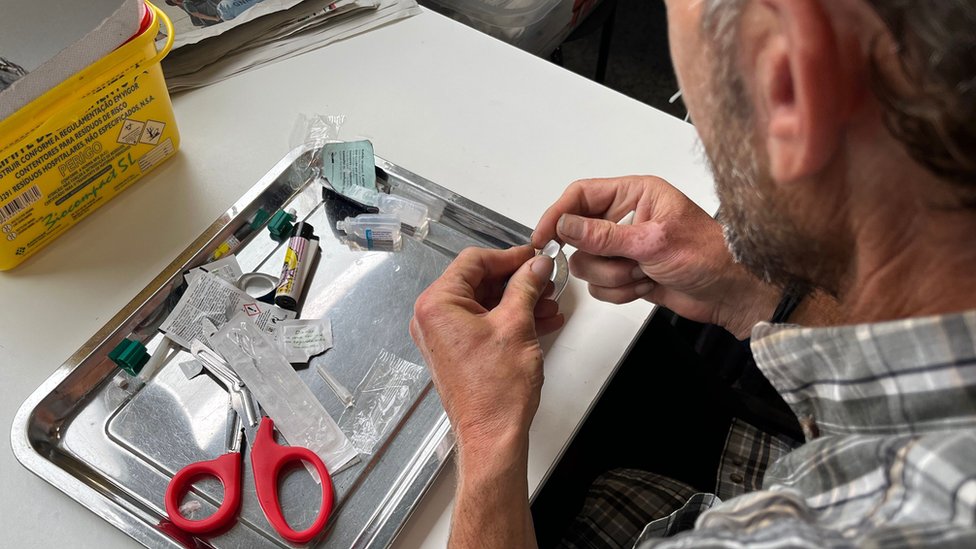
WHO Global Tobacco Epidemic 2025 Report: Advancing Sustainable Development Goals through Tobacco Control
Introduction
The World Health Organization (WHO) has released the Global Tobacco Epidemic 2025 report at the World Conference on Tobacco Control in Dublin. The report highlights the urgent need to sustain and accelerate tobacco control efforts amid increasing tobacco industry interference. This initiative aligns closely with the United Nations Sustainable Development Goals (SDGs), particularly SDG 3: Good Health and Well-being, by addressing the global tobacco epidemic responsible for over 7 million deaths annually.
WHO MPOWER Tobacco Control Measures and SDG Alignment
The report emphasizes six evidence-based WHO MPOWER measures designed to reduce tobacco use and promote public health:
- Monitoring tobacco use and prevention policies;
- Protecting people from tobacco smoke through smoke-free air legislation;
- Offering help to quit tobacco use;
- Warning about the dangers of tobacco via pack labels and mass media campaigns;
- Enforcing bans on tobacco advertising, promotion, and sponsorship;
- Raising taxes on tobacco products.
These measures contribute directly to SDG 3 by reducing premature mortality from non-communicable diseases and support SDG 1 (No Poverty) and SDG 10 (Reduced Inequalities) by mitigating the economic burden of tobacco-related illnesses.
Global Progress and Coverage
- Since 2007, 155 countries have implemented at least one MPOWER measure at best-practice level.
- Currently, over 6.1 billion people—approximately 75% of the global population—are protected by at least one MPOWER policy, a significant increase from 1 billion in 2007.
- Four countries—Brazil, Mauritius, the Netherlands, and Türkiye—have fully implemented the MPOWER package.
- Seven countries, including Ethiopia, Ireland, and New Zealand, are one measure away from full MPOWER implementation.
Despite progress, 40 countries have yet to adopt any MPOWER measure at best-practice level, and over 30 countries permit cigarette sales without mandatory health warnings, indicating gaps that hinder achievement of SDG 3 targets.
Key Achievements in Tobacco Control
- Graphic Health Warnings: Now mandated in 110 countries, protecting 62% of the global population, up from 9 countries in 2007.
- Plain Packaging: Adopted by 25 countries, enhancing the impact of health warnings.
- Smoke-Free Environments: Comprehensive smoke-free laws cover one-third of the global population, implemented in 79 countries.
- Regulation of Electronic Nicotine Delivery Systems (ENDS): Increased from 122 countries in 2022 to 133 in 2024, addressing emerging tobacco products.
Challenges and Areas for Improvement
Despite advances, several challenges remain that affect the realization of SDG 3 and related goals:
- Anti-Tobacco Campaigns: 110 countries have not conducted such campaigns since 2022; only 36% of the global population lives in countries with best-practice campaigns.
- Taxation: 134 countries have failed to make cigarettes less affordable; only 3 countries increased taxes to best-practice levels since 2022.
- Cessation Services: Only 33% of the global population has access to cost-covered tobacco cessation support.
- Advertising Bans: Best-practice bans exist in 68 countries, covering just over 25% of the global population.
- Second-Hand Smoke: Approximately 1.3 million deaths annually are attributed to second-hand smoke exposure.
- Regulatory Gaps: Over 60 countries lack regulations on ENDS products.
Call to Action and SDG Integration
WHO Director-General Dr. Tedros Adhanom Ghebreyesus emphasized the need for unified scientific, policy, and political efforts to end the tobacco epidemic, reinforcing commitments to SDG 3 and related goals. Dr. Ruediger Krech, Director of Health Promotion, urged governments to:
- Close remaining policy gaps;
- Strengthen enforcement of tobacco control measures;
- Invest in proven interventions that save lives;
- Accelerate progress on MPOWER implementation;
- Ensure equitable access to tobacco control benefits, leaving no one behind.
Support and Recognition
The report was developed with support from Bloomberg Philanthropies and launched during the 2025 Bloomberg Philanthropies Awards for Global Tobacco Control, which recognized governments and NGOs advancing tobacco control efforts. Michael R. Bloomberg reaffirmed his organization’s commitment to supporting WHO’s work to save millions of lives, contributing to the achievement of SDG 3 and fostering healthier societies worldwide.
Resources
- WHO MPOWER Data Portal – Tracks country-level progress from 2007 to 2025.
- Global Tobacco Epidemic 2025 Report
1. Sustainable Development Goals (SDGs) Addressed or Connected
- SDG 3: Good Health and Well-being
- The article focuses on reducing tobacco use, which directly impacts health and well-being by preventing millions of deaths caused by tobacco-related diseases.
- It highlights the WHO Global Tobacco Epidemic report and tobacco control measures aimed at improving public health.
- SDG 12: Responsible Consumption and Production
- Measures such as raising taxes on tobacco and enforcing bans on advertising promote responsible consumption.
- SDG 17: Partnerships for the Goals
- The article mentions collaboration between WHO, Bloomberg Philanthropies, governments, and NGOs, emphasizing global partnerships to combat tobacco use.
2. Specific Targets Under Those SDGs Identified
- SDG 3: Good Health and Well-being
- Target 3.4: By 2030, reduce by one third premature mortality from non-communicable diseases through prevention and treatment.
- Target 3.a: Strengthen the implementation of the WHO Framework Convention on Tobacco Control.
- SDG 12: Responsible Consumption and Production
- Target 12.8: Ensure that people have relevant information and awareness for sustainable development and lifestyles in harmony with nature.
- SDG 17: Partnerships for the Goals
- Target 17.16: Enhance the global partnership for sustainable development, complemented by multi-stakeholder partnerships.
3. Indicators Mentioned or Implied to Measure Progress
- Indicator for Target 3.a:
- Number of countries implementing WHO MPOWER tobacco control measures at best-practice level (e.g., monitoring tobacco use, smoke-free laws, cessation support, health warnings, advertising bans, and taxation).
- Percentage of global population protected by at least one MPOWER policy (currently over 6.1 billion people, or three-quarters of the world’s population).
- Number of countries with graphic health warnings and plain packaging regulations.
- Number of countries running anti-tobacco campaigns and the percentage of the global population covered by these campaigns.
- Number of countries implementing comprehensive smoke-free environments.
- Number of countries regulating or banning electronic nicotine delivery systems (ENDS).
- Indicator for Target 12.8:
- Extent and quality of warning labels and mass media campaigns about the dangers of tobacco.
- Indicator for Target 17.16:
- Number and impact of partnerships such as WHO and Bloomberg Philanthropies collaboration, and involvement of governments and NGOs in tobacco control efforts.
4. Table: SDGs, Targets and Indicators
| SDGs | Targets | Indicators |
|---|---|---|
| SDG 3: Good Health and Well-being |
|
|
| SDG 12: Responsible Consumption and Production |
|
|
| SDG 17: Partnerships for the Goals |
|
|
Source: who.int







